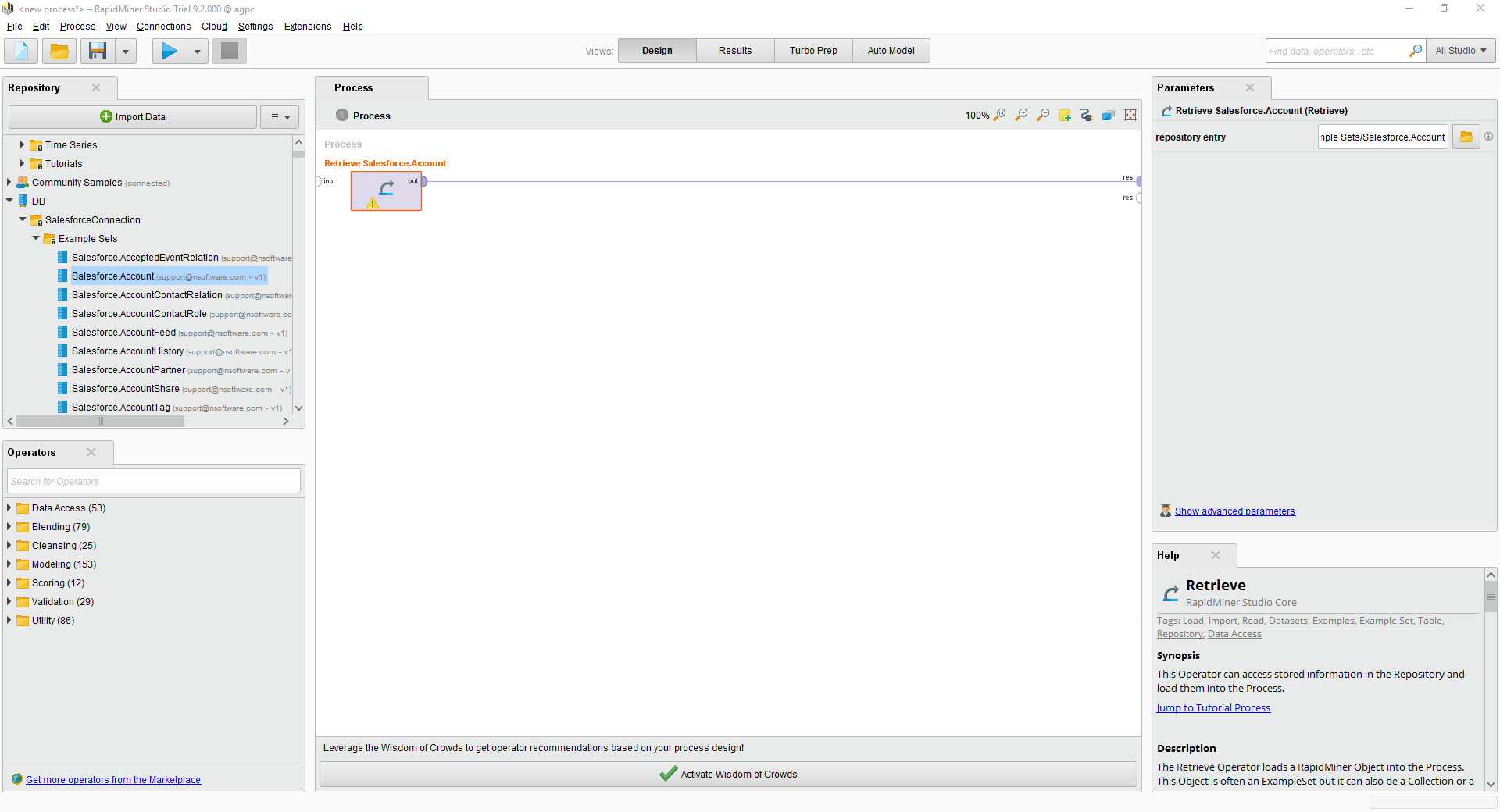Discover how a bimodal integration strategy can address the major data management challenges facing your organization today.
Get the Report →Connect to Azure Data Lake Storage Data in RapidMiner
Integrate Azure Data Lake Storage data with standard components and data source configuration wizards in RapidMiner Studio.
This article shows how you can easily integrate the CData JDBC driver for Azure Data Lake Storage into your processes in RapidMiner. This article uses the CData JDBC Driver for Azure Data Lake Storage to transfer Azure Data Lake Storage data to a process in RapidMiner.
Connect to Azure Data Lake Storage in RapidMiner as a JDBC Data Source
You can follow the procedure below to establish a JDBC connection to Azure Data Lake Storage:
- Add a new database driver for Azure Data Lake Storage: Click Connections -> Manage Database Drivers.
- In the resulting wizard, click the Add button and enter a name for the connection.
- Enter the prefix for the JDBC URL:
jdbc:adls: - Enter the path to the cdata.jdbc.adls.jar file, located in the lib subfolder of the installation directory.
- Enter the driver class:
cdata.jdbc.adls.ADLSDriver![The JDBC driver configuration. (Salesforce is shown.)]()
- Create a new Azure Data Lake Storage connection: Click Connections -> Manage Database Connections.
- Enter a name for your connection.
- For Database System, select the Azure Data Lake Storage driver you configured previously.
- Enter your connection string in the Host box.
Authenticating to a Gen 1 DataLakeStore Account
Gen 1 uses OAuth 2.0 in Azure AD for authentication.
For this, an Active Directory web application is required. You can create one as follows:
To authenticate against a Gen 1 DataLakeStore account, the following properties are required:
- Schema: Set this to ADLSGen1.
- Account: Set this to the name of the account.
- OAuthClientId: Set this to the application Id of the app you created.
- OAuthClientSecret: Set this to the key generated for the app you created.
- TenantId: Set this to the tenant Id. See the property for more information on how to acquire this.
- Directory: Set this to the path which will be used to store the replicated file. If not specified, the root directory will be used.
Authenticating to a Gen 2 DataLakeStore Account
To authenticate against a Gen 2 DataLakeStore account, the following properties are required:
- Schema: Set this to ADLSGen2.
- Account: Set this to the name of the account.
- FileSystem: Set this to the file system which will be used for this account.
- AccessKey: Set this to the access key which will be used to authenticate the calls to the API. See the property for more information on how to acquire this.
- Directory: Set this to the path which will be used to store the replicated file. If not specified, the root directory will be used.
Built-in Connection String Designer
For assistance in constructing the JDBC URL, use the connection string designer built into the Azure Data Lake Storage JDBC Driver. Either double-click the JAR file or execute the jar file from the command-line.
java -jar cdata.jdbc.adls.jarFill in the connection properties and copy the connection string to the clipboard.
![Using the built-in connection string designer to generate a JDBC URL (Salesforce is shown.)]()
A typical connection string is below:
Schema=ADLSGen2;Account=myAccount;FileSystem=myFileSystem;AccessKey=myAccessKey;InitiateOAuth=GETANDREFRESH - Enter your username and password if necessary.
![The connection to the JDBC data source. (Salesforce is shown.)]()
You can now use your Azure Data Lake Storage connection with the various RapidMiner operators in your process. To retrieve Azure Data Lake Storage data, drag the Retrieve operator from the Operators view.
 With the Retrieve operator selected, you can then define which table to retrieve in the Parameters view by clicking the folder icon next to the "repository entry." In the resulting Repository Browser, you can expand your connection node to select the desired example set.
With the Retrieve operator selected, you can then define which table to retrieve in the Parameters view by clicking the folder icon next to the "repository entry." In the resulting Repository Browser, you can expand your connection node to select the desired example set.

Finally, wire the output to the Retrieve process to a result, and run the process to see the Azure Data Lake Storage data.










